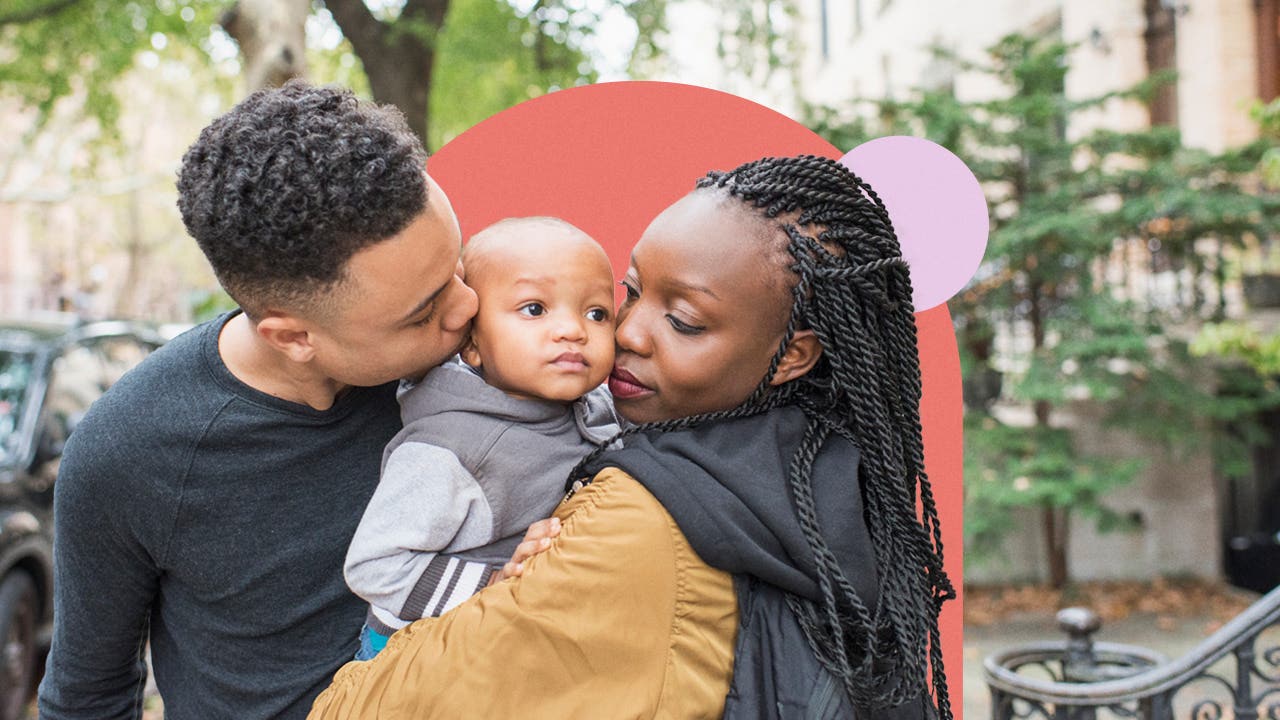Guide to first-time homebuyer loans and programs

The Bankrate promise
At Bankrate we strive to help you make smarter financial decisions. While we adhere to strict , this post may contain references to products from our partners. Here's an explanation for .
If you’ve never owned a home before — or it’s been a while since you have — you might qualify for a first-time homebuyer loan or assistance. First-time buyer loans typically have more flexible requirements, such as a lower down payment and credit score. Many help buyers with closing costs and the down payment through grants and low-interest loans. Here is our comprehensive guide to both first-time homebuyer loans and programs.
What is a first-time homebuyer program?
First-time homebuyer programs help make homeownership more affordable for people who haven’t ever owned a home (or haven’t owned a home in some time). These programs come in a variety of flavors, but usually include a mortgage with a better interest rate, lower down payment requirement and other upsides like down payment and closing costs assistance.
Types of first-time homebuyer programs
- Low-down payment conventional loans: Conventional loan programs that require just 3 percent down
- Down payment assistance (DPA) programs: Loans, grants and matching programs to help you with your down payment
- Federal first-time homebuyer programs: Loans and programs backed or offered by the federal government
- State, non-profit and employer-sponsored programs: Homebuying assistance at the local level
Along with these, first-time homebuyers who are students or in a certain profession might qualify for a special type of loan, as well. Below, we’ll break down what each of these programs entails:
Low-down payment conventional loans
Conventional loans are the most popular type of mortgage, and only require 3 percent down. This makes them an attractive option for first-time homebuyers who might not have considerable savings to draw from. These low-down payment loans include the:
- Conventional 97 mortgage: This conventional loan, backed by government-sponsored enterprises (GSEs) Fannie Mae and Freddie Mac, requires just 3 percent down and a minimum credit score of 620. It also requires you to pay for private mortgage insurance (PMI), a type of policy that protects your mortgage lender should you stop paying back your loan. You’ll pay these premiums until you pay down your balance to 80 percent of the value of your home.
- HomeReady mortgage: Similar to the Conventional 97 program, Fannie Mae’s HomeReady mortgage program also requires just 3 percent down (with PMI, although it might be less expensive).
- Home Possible mortgage: Freddie Mac’s Home Possible mortgage program is the counterpart to the HomeReady mortgage, with a 3 percent minimum down payment requirement.
- HomeOne mortgage: This Freddie Mac-backed mortgage also allows for just 3 percent down with PMI, but is available only to first-time homebuyers.
You won’t get your low-down payment conventional loan directly from Fannie Mae or Freddie Mac. Instead, you’ll work with a mortgage lender of your choosing, which might be a bank, online lender or credit union, for example.
Through state housing finance agencies (HFAs), Fannie and Freddie also back another set of 3 percent down payment programs, called HFA Preferred and HFA Advantage, respectively.
Down payment assistance (DPA) options
There are many types of down payment assistance, including:
Down payment assistance loans
Many first-time homebuyer programs offer a lower-cost first mortgage to help you buy the home, then a second mortgage to help you cover your down payment and closing costs. These second mortgages are commonly structured as either:
- Low-interest loans: A low-interest second mortgage you’ll repay over the course of a few years
- Deferred-payment loans: A no-interest second mortgage you’ll repay when you sell the home, refinance or pay off your first mortgage
- Forgivable loans: A second mortgage you won’t have to pay back so long as you stay in the home for a certain amount of time (the exact period depends on the program) and stay up-to-date with your mortgage payments
Down payment savings match
Down payment savings match programs provide matched funds up to a certain amount. The money can only be used for your down payment and closing costs.
One type of matched savings program is an Individual Development Account (IDA). If you qualify, you’ll work with an assigned counselor to deposit funds into an IDA over a set period of time. If you follow the savings plan, you’ll receive the match when you close on the home.
Down payment grants
A down payment or first-time homebuyer grant is essentially free money to help you cover your down payment or closing costs. The grants are usually awarded to low- or moderate-income borrowers, typically defined as those earning no more than 80 percent of the median income in their area. They might have other requirements, too, like a minimum credit score and maximum home purchase price.
Federal first-time homebuyer programs
Government-backed mortgage loans
The Federal Housing Administration (FHA), Department of Veterans Affairs (VA) and Department of Agriculture (USDA) back mortgage programs that are often an option for first-time homebuyers. These loans aren’t created or funded by these agencies, however; they’re offered through approved mortgage lenders throughout the U.S. Some lenders even specialize in certain types. Here’s an overview:
- FHA loan: Insured by the Federal Housing Administration, FHA loans allow you to buy a home with a minimum credit score of 580 and as little as 3.5 percent down, or a credit score as low as 500 with at least 10 percent down. If you put down less than 20 percent, you’ll pay FHA mortgage insurance premiums (MIP), similar to the insurance you’d pay for a low-down payment conventional loan. The difference, though: You can’t stop paying FHA MIP unless you refinance out of an FHA loan entirely.
- VA loan: The VA guarantees home loans for eligible U.S. military members (active duty, veterans and surviving spouses). These don’t require a down payment, though there is a funding fee.
- USDA loan: USDA loans don’t require a down payment, but you’ll need to purchase in a designated rural area and all under area-specific income limits to qualify.
Good Neighbor Next Door
The Good Neighbor Next Door program, overseen by the U.S. Department of Housing and Urban Development (HUD), is geared toward law enforcement officers, firefighters, emergency medical technicians and pre-kindergarten through 12th grade teachers. If you work in one of these professions, you could buy a home in a “revitalization area” for 50 percent off, provided you live in the home for at least three years. You can search for properties available in your state on the program’s website.
HomePath Ready Buyer Program
Fannie Mae’s HomePath ReadyBuyer program is geared toward first-time buyers interested in a foreclosed home. After taking a required online homebuyer education course, you can receive up to 3 percent in closing cost assistance toward the purchase of a property that’s been foreclosed and is now owned by Fannie Mae.This program isn’t for everyone, however: Not only are you limited in your choice of properties, but the options (like many foreclosed homes) might need lots of repairs.
Energy-efficient mortgage (EEM)
Making green upgrades can be costly, but you can get an energy-efficient mortgage (EEM) (either a conventional loan or one backed by the FHA or VA) to help finance them. This type of mortgage allows you to tack the cost of energy-efficient upgrades (think new insulation, a more efficient HVAC system or double-pane windows) onto your primary loan, without requiring a larger down payment.
However, EEMs come with larger mortgage payments (since you’re borrowing more), and there are certain requirements, including an energy assessment. Those larger payments might be worth it, though, as you could wind up saving on your utility bills in the long run.
Native American Direct Loan (NADL) and Section 184 program
The Native American Direct Loan (NADL), guaranteed by the VA, and Section 184 loan, guaranteed by HUD, provide financing to eligible Native American homebuyers. A Section 184 loan requires just 2.25 percent down. The NADL program has no down payment requirement, but is only for Native American veterans and their spouses.
First-time homebuyer programs by state
Each U.S. state operates a housing finance authority (HFA) that serves to encourage homeownership, among other responsibilities. Here are these HFAs and other first-time buyer resources by region:
Nonprofit programs
Nonprofit program options tend to be reserved for first-time homebuyers with incomes that are significantly lower than the median income in their area, or buyers who fit certain demographic or other criteria.
Neighborhood Assistance Corporation of America
The Neighborhood Assistance Corporation of America (NACA) is a nonprofit that provides low-rate mortgages to low- and moderate-income borrowers without requiring a down payment or closing costs or any mortgage insurance. The nonprofit doesn’t use credit scores to qualify you, either: Instead, it looks at other factors such as rent payment history.
Habitat for Humanity
If your annual income is 60 percent or less of the median income in your area, you might qualify for Habitat for Humanity’s homeownership program. Along with not exceeding the income threshold, you’ll need to contribute sweat equity — in other words, help build the home or a home for another applicant — to qualify.
Employer-sponsored programs
Employer-assisted housing (EAH) programs help employees with housing needs, usually in neighborhoods near the workplace. This assistance can come in many forms, such as a forgivable loan coupled with required homeownership education.
EAH programs are often limited to certain occupations, and there could be other restrictions, such as a first-time homebuyer or specific tenure requirement, or income limits.
First-time homebuyer programs for students
If you recently graduated from college, you might be eligible for help buying your first home. For example, the state of Ohio offers a Grants for Grads program with up to 5 percent down payment assistance for anyone who finished an academic program in the last 48 months. These programs typically come with a requirement to stay put for a given time (in Ohio, it’s five years), or else you’ll need to repay the funds.
How to apply for a first-time homebuyer loan or program
Your mortgage lender can help you determine whether you qualify for a first-time homebuyer program, as well as apply for one if you do. You can also check out your state’s housing finance agency (HFA) website to learn eligibility criteria and take next steps to apply. There will be forms to fill out, but the payoff can make the investment well worth the time.
First-time homebuyer FAQ
-
A first-time homebuyer refers to a homebuyer who hasn’t owned a home previously. However, in terms of qualifying for a first-time buyer program, it often doesn’t have to be your very first time. Many programs define “first-time homebuyer” as a buyer who hasn’t owned a home within the past three years. Depending on the program, the qualifications might also include not exceeding a certain income or buying a home above a specific price point.
-
The best type of mortgage for a first-time homebuyer (or any borrower) is one that’s affordable. This might mean a loan that has a lower interest rate, lower down payment requirement, low or no mortgage insurance and other ways to save.
That said, many first-time buyers go with a 30-year, fixed-rate mortgage because the monthly payments are lower and more predictable. Two popular 30-year fixed-rate choices: conventional loans and FHA loans.
-
First-time homebuyer education programs are designed to help you understand the various aspects of owning a home. To qualify for many first-time buyer loan programs, you’ll need to take a course. If you’re obtaining a conventional loan, you might be able to take the Fannie Mae HomeView online class to satisfy this requirement. Check with your loan officer to learn your options.


